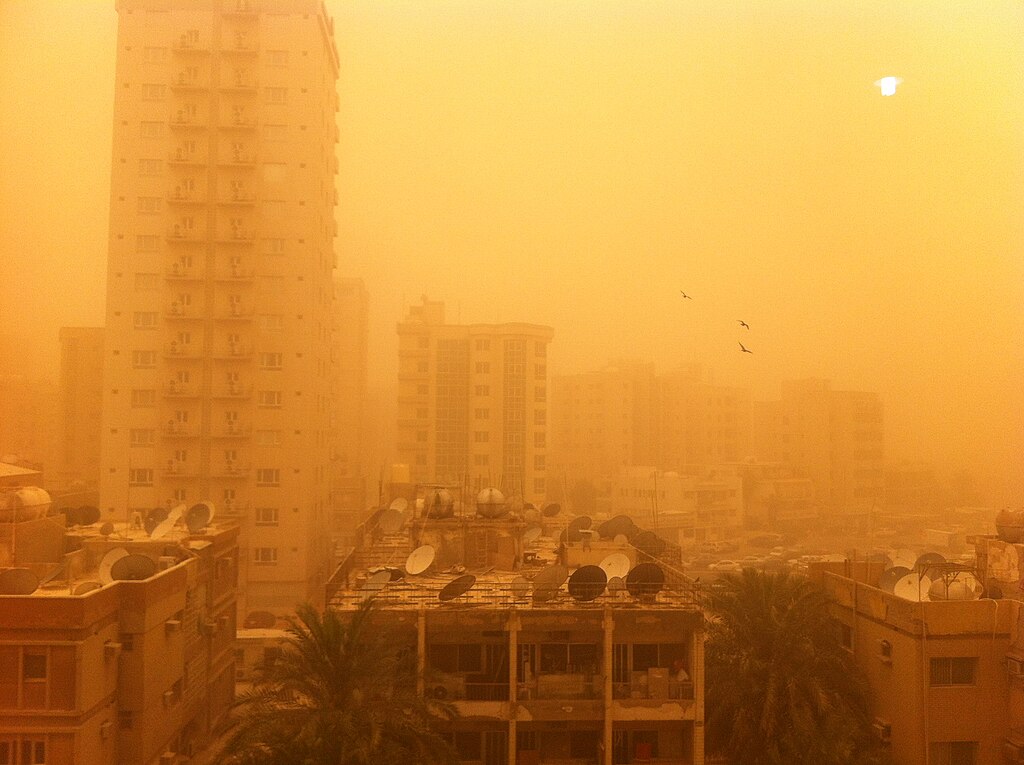A series of intense sandstorms swept through Saudi Arabia and Iraq on May 4 and 5, 2025, severely impacting visibility, transportation, and public health.
Saudi Arabia: Widespread Disruption
On May 4, sandstorms engulfed several regions in Saudi Arabia, including Riyadh, Al Qassim, Hail, and parts of Mecca and Medina. In Riyadh, visibility dropped to near zero, with residents describing the city as enveloped in darkness by late afternoon. The Saudi Civil Defence urged the public to stay indoors, especially individuals with respiratory conditions, due to hazardous air quality and strong winds. Traffic disruptions were widespread, with reports of overturned streetlights and reduced visibility on major roads .
The sandstorms were attributed to strong northwesterly winds, known as “shamal,” which are common in the region during this time of year. These winds can carry large amounts of dust and sand, leading to significant reductions in visibility and posing health risks .
Iraq: Health and Transportation Crisis
On May 5, a major dust storm affected Baghdad and surrounding regions, significantly reducing visibility and prompting health concerns. The General Traffic Directorate advised drivers to reduce speed, use hazard lights, maintain a safe distance between vehicles, and stop driving altogether if visibility became critically low. Hospitals reported over 1,000 cases of respiratory issues, including over 700 in Al Anbar Governorate, over 300 in Salah al Din Governorate, and around 100 cases in both Al-Qadisiyah and An-Najaf governorates. Yarmouk Hospital in Baghdad reported around 600 cases as of May 5 .
The dust storm also led to the suspension of flights at Al Najaf International Airport (NJF) and Sulaymaniyah International Airport (ISU) on May 5. Baghdad International Airport (BGW) reported that flights were operating as normal after previous suspensions during an earlier dust storm on May 3 .
Outlook
Meteorologists anticipate that the sandstorms will continue to intensify as they move towards Kuwait over the coming days. Residents in affected areas are advised to stay informed through local authorities and take necessary precautions to protect their health and safety.
For more information and updates on the ongoing sandstorm conditions, residents are encouraged to monitor official weather advisories and follow guidance from local authorities.



